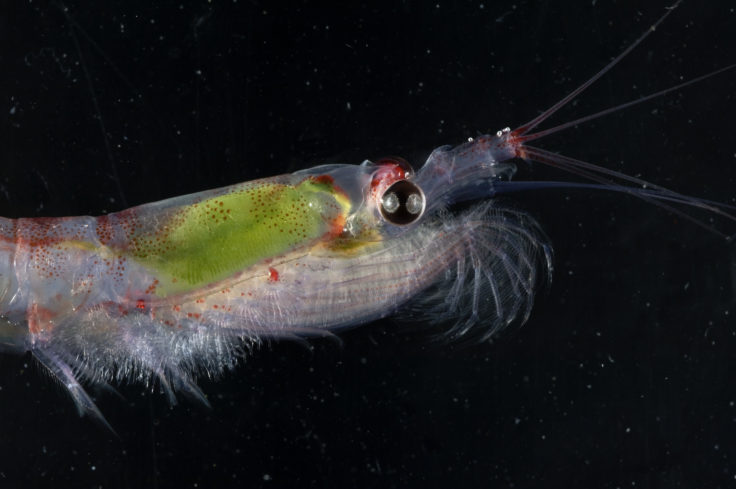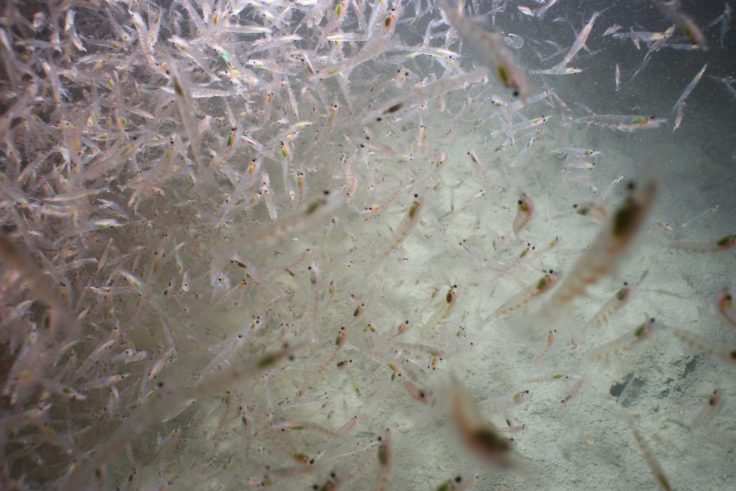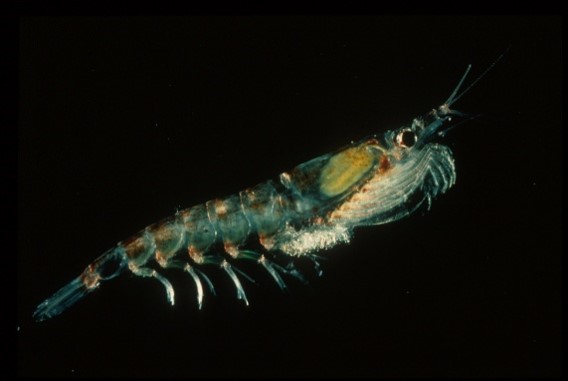Plastic reduces how krill remove carbon into deep ocean
New research shows that increased levels of plastic pollution in the Southern Ocean could reduce the ability of Antarctic krill, a tiny shrimp-like crustacean, to help take CO2 from the atmosphere. The results are published this month in the journal Marine Pollution Bulletin.
Antarctic krill feed on phytoplankton, tiny plants that live in the ocean and absorb CO2 and remove carbon when their poo sinks to the deep ocean. Researchers from British Antarctic Survey (BAS) found that the presence of nanoplastics in the seawater (plastic particles more than 100 times smaller than the width of a human hair) could reduce the ability of the krill poo to remove and store CO2 in the deep ocean by 27%.

Krill equate to roughly the same biomass as all the humans on planet Earth and play a vital role in locking away ‘blue carbon’ in the Southern Ocean. Understanding the impact of human activities on carbon removed by the ocean is critical for informing international action on climate change.
Antarctic krill form large swarms which can reach over a kilometre in length, driving a huge ‘rain’ of carbon-rich krill faeces which sink rapidly to the deep ocean. The poo locks away carbon from the atmosphere for long periods of time.

Another recent study by researchers from Imperial College London and BAS demonstrated the key role that Antarctic krill play in carbon cycling. They estimated that Antarctic krill faeces locks away at least 20 million tonnes of carbon into the deep ocean annually, – storing similar amounts of carbon to key ‘blue carbon’ habitats such as mangroves, saltmarshes and seagrasses.
Lead author Clara Manno, a marine ecologist at BAS says:
“Krill are an important part of the Southern Ocean food web and are the diet of penguins, seals and whales. We had already found plastic pollution in Antarctic krill from the Southern Ocean. But for the first time, we have evidence that plastic pollution could be reducing the ability of krill faeces to transport and store carbon in the deep ocean by over a quarter – this is huge! Now we can see that plastic pollution is disrupting the natural role that the ocean, and climate heroes like krill, play in balancing the global carbon cycle.”
Live krill samples were collected onboard the research ship RRS James Clark Ross on a science mission near the sub-Antarctic island of South Georgia. Scientists performed an experiment on the faeces produced by these animals, investigating how nanoplastic contamination affects the breakdown of the poo. They found that the presence of nanoplastics may encourage bacteria to decompose natural materials, meaning krill faeces degrade more and cannot carry as much carbon as they sink to the deep ocean.

Co-author Emily Rowlands, who’s a marine ecologist at BAS, says:
“Nanoplastics are invisible to the human eye but they can have a big impact in the environment. Understanding that it’s not just the animals themselves being impacted but their positive role in mitigating climate change really highlights the need for global action on the issue of plastic pollution.”
Understanding how human disturbances impact carbon being locked away by krill is particularly relevant in the Antarctic regions where krill populations are exposed to harmful human-induced effects from multiple areas, such as ocean warming, ocean acidification and the impacts of fisheries.
The work was funded by the UKRI Future Leader Fellowship programme project: ‘CalcUlating the strength of the Plastic pump In counteracting the Deep export of Oceanic carbon’ (CUPIDO).
‘Plastics counteract the ability of Antarctic krill to promote the blue carbon pathway in the deep ocean’ by Clara Manno, Ilaria Corsi, Elisa Bergami and Emily Rowlands is published in Marine Pollution Bulletin, https://doi.org/10.1016/j.marpolbul.2024.117238.